Abstract
1. Intravenous infusion of the individual components of the renin-angiotensin system caused drinking in dogs in water balance. 2. Angiotensin II was the most potent and rapidly acting peptide inducing drinking. The minimum effective rate of infusion was between 8.3 and 16.6 X 10(-12) mole kg-1 min-1 which yield blood levels of angiotensin II that fell well within physiological limits for the dog and were mildly pressor. Angiotensin I and synthetic renin substrate caused less drinking than angiotensin II, and angiotensin III was the least effective dipsogen. 3. Renin caused significant drinking when infused I.V. at a rate of 0.5 u. min-1 for 15 min. Drinking was slower in onset and continued for longer than after other components of the renin-angiotensin system. 4. Within the dose range 1875-15,000 X 10(-12) mole of angiotensin II the amount of water drunk depended more on the rate of infusion than on the duration of the infusion. 5. During an I.V. infusion of angiotensin II lasting 2 hr, the rate of drinking was greatest during the first 15 min. After this declined progressively. 6. A delay of 1 hr after the start of an intravenous infusion of angiotensin II before access to water was allowed, did not significantly reduce the amount of water drunk. Nor did infusion of isotonic saline for 105 min reduce drinking in response to a subsequent infusion of angiotensin II. However, a preload of dilute milk approximately equal in volume to the amount of water normally drunk in response to I.V. angiotensin II significantly reduced drinking. Therefore the dog stopped drinking during long-term infusions of angiotensin II owing to the action of satiety mechanisms and not to tachyphylaxis or fatigue. 7. Intracarotid infusion of angiotensin II, angiotensin I, synthetic renin substrate and angiotensin III, at 40 X 10(-12) mole min-1 also caused drinking. Intakes of water were similar to the intakes after I.V. infusion at six times the arterial rate, except that angiotensin I was relatively less effective by intracarotid infusion than by I.V. infusion. 8. Renin, infused at 0.5 u. min-1 for 15 min, was much less effective by intracarotid infusion than by intravenous. 9. These results are compatible with a role for circulating angiotensin II in the thirst of hypovolaemia or moderate extracellular dehydration.
Full text
PDF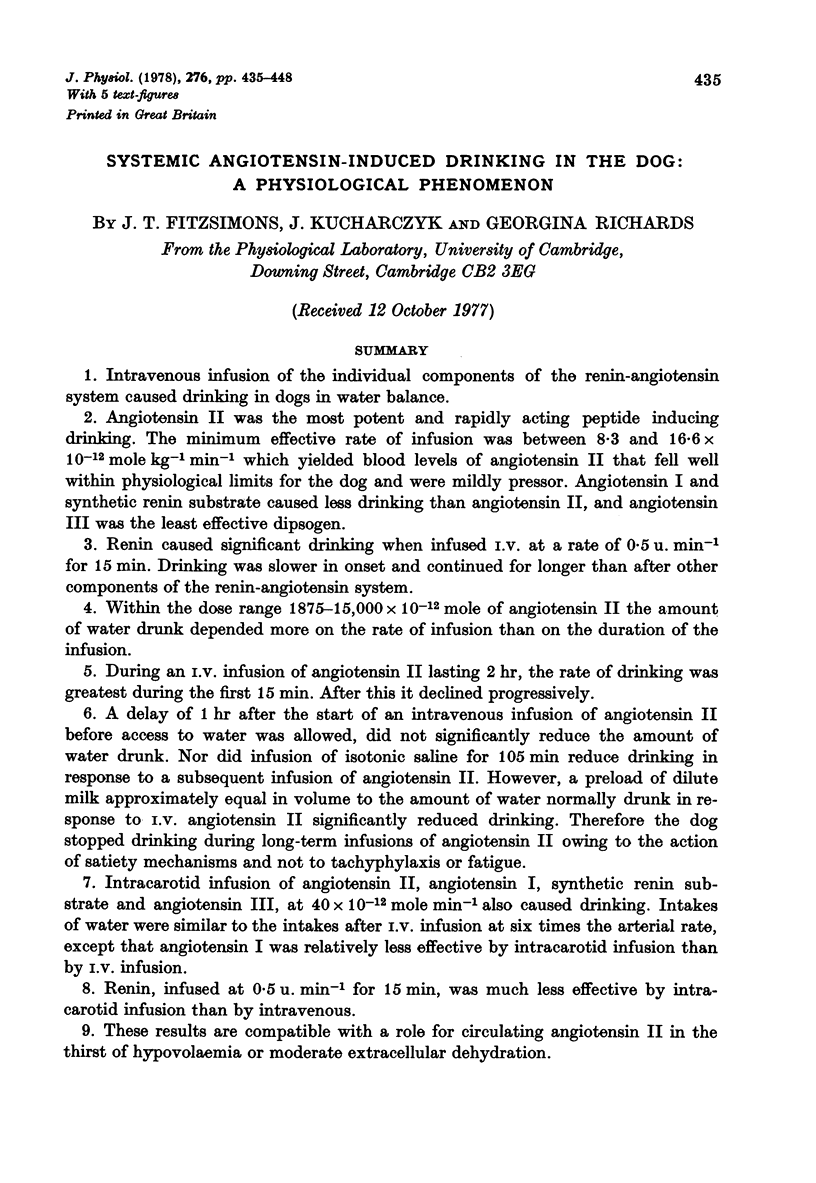
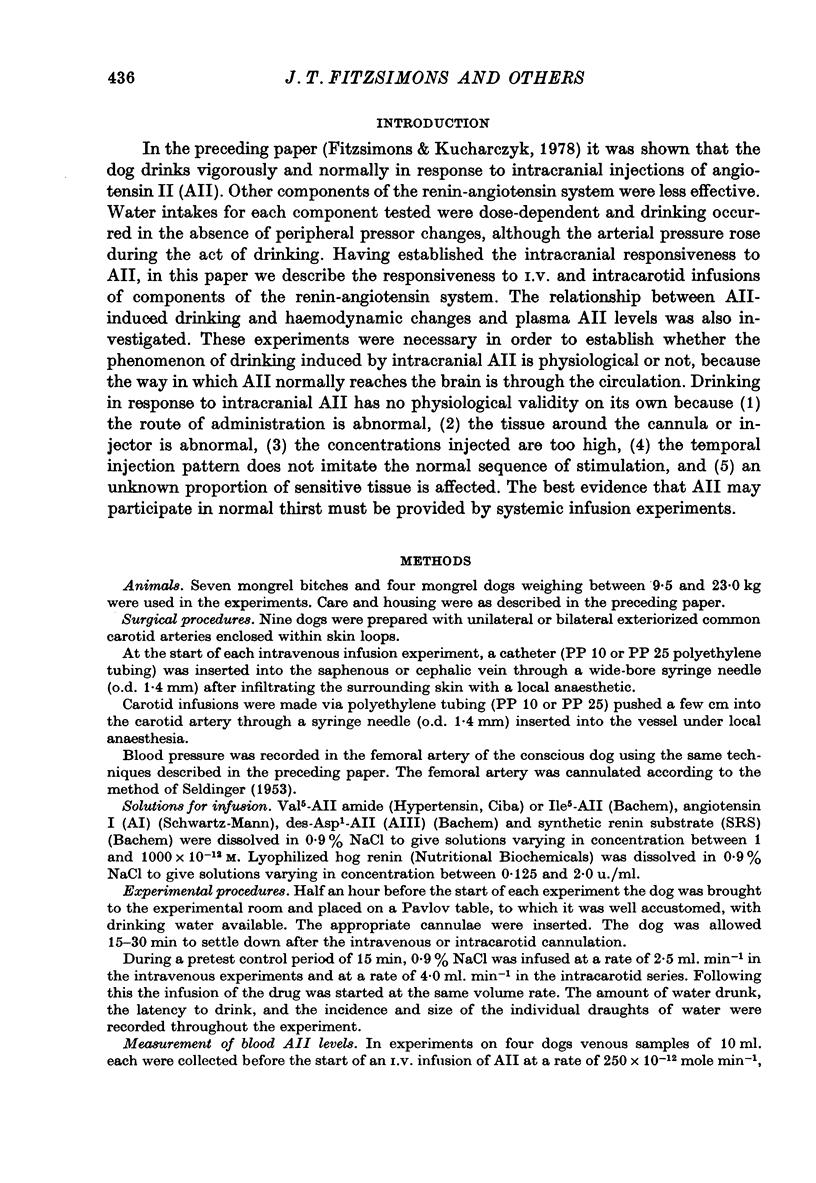
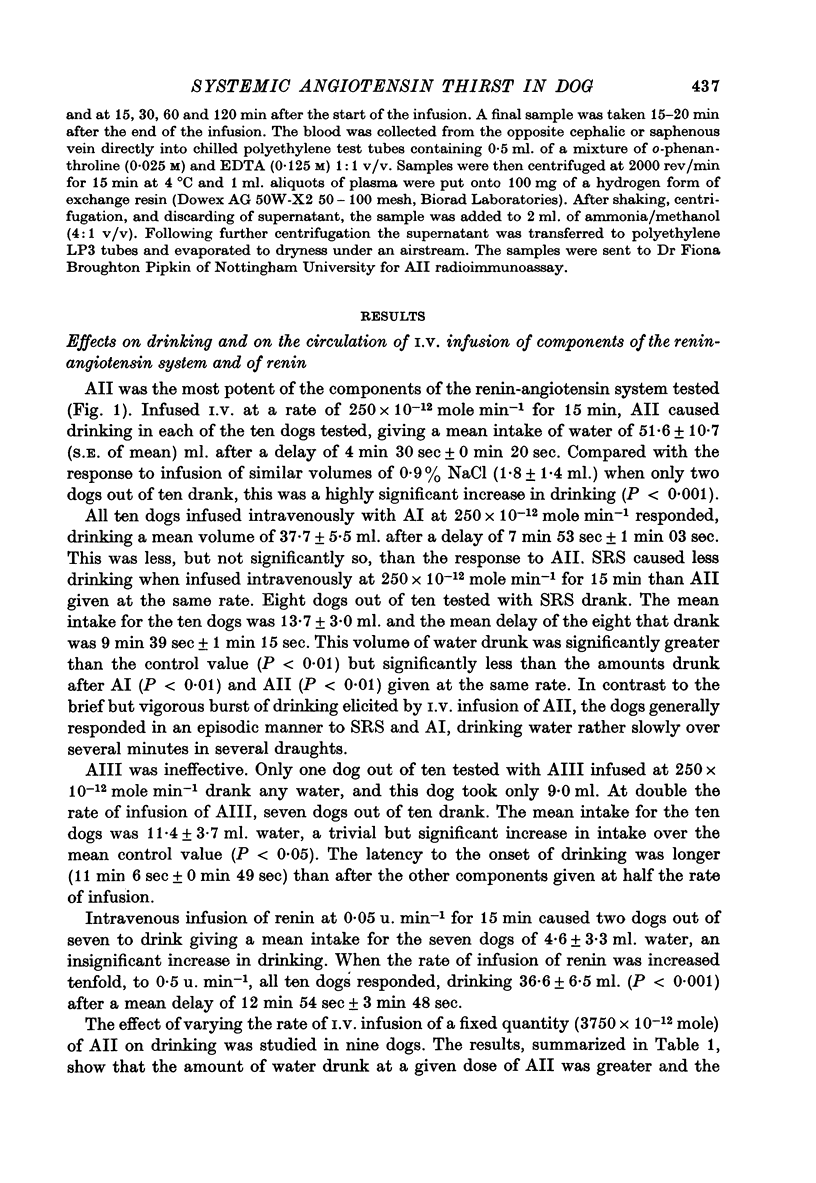
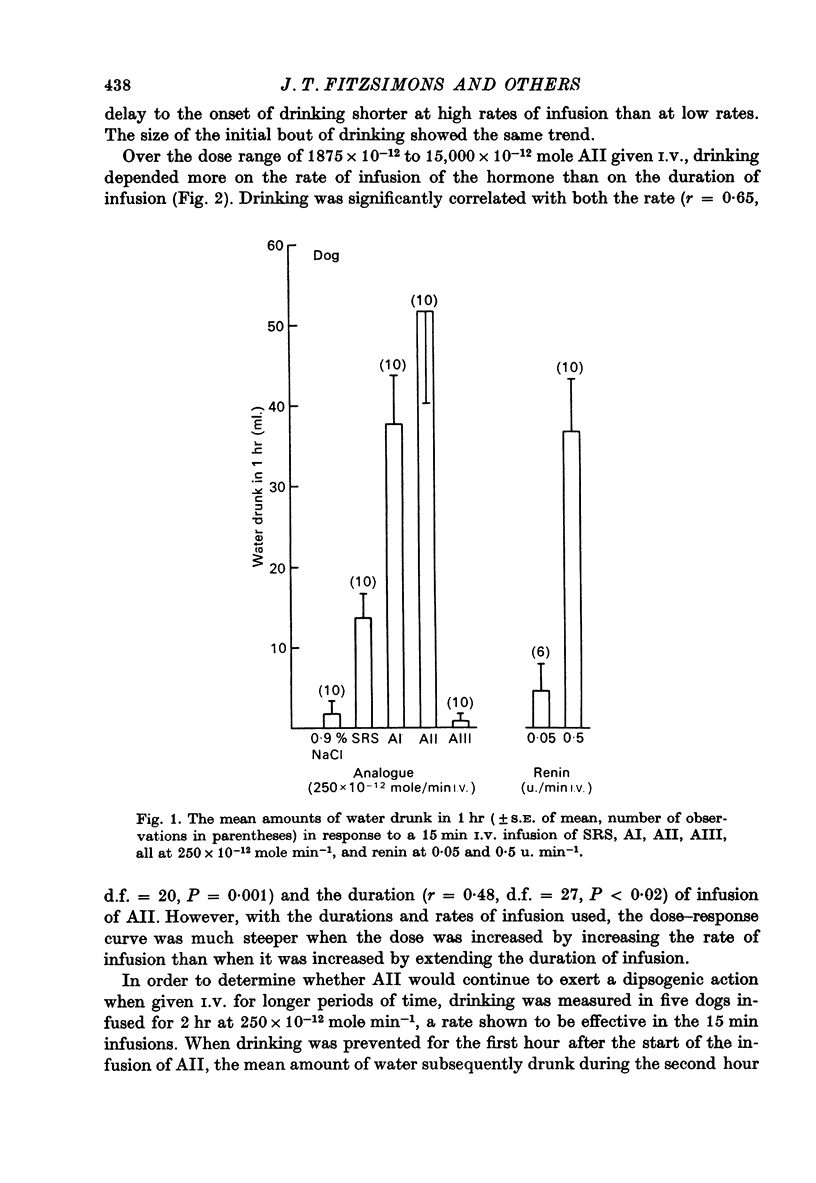

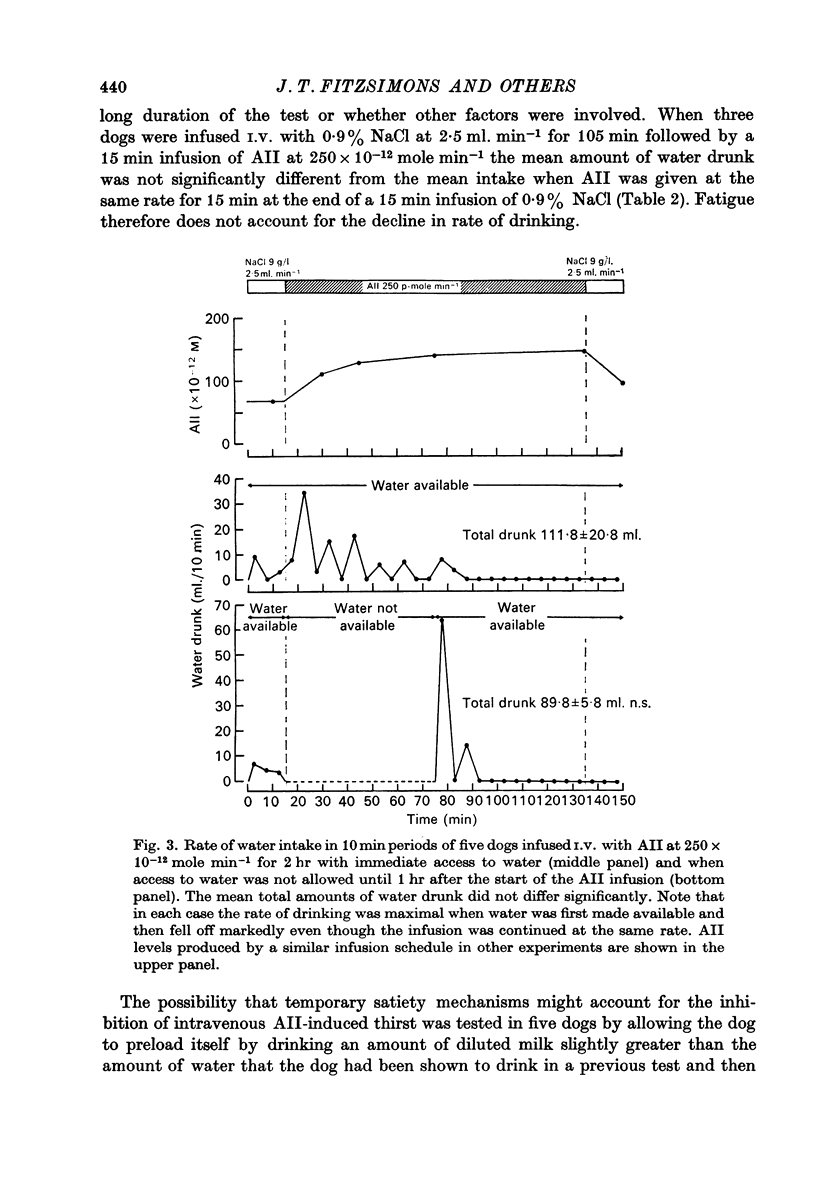
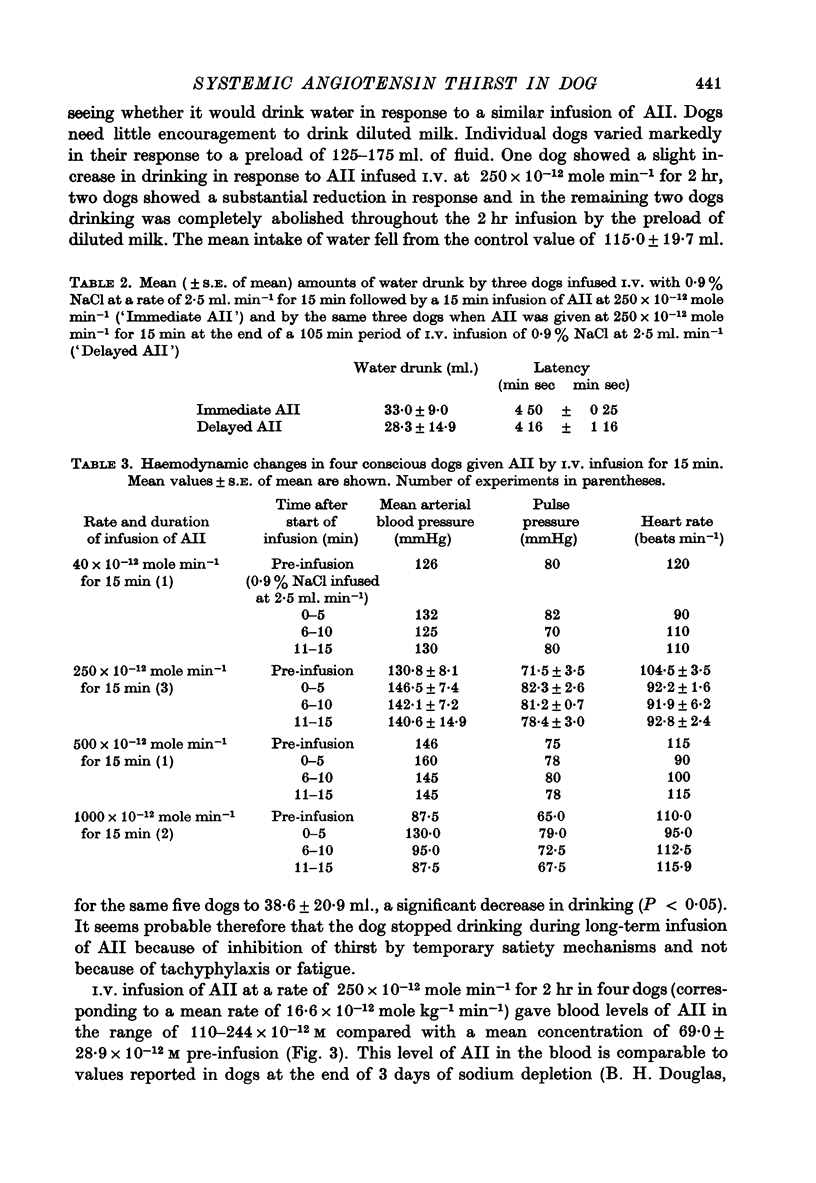
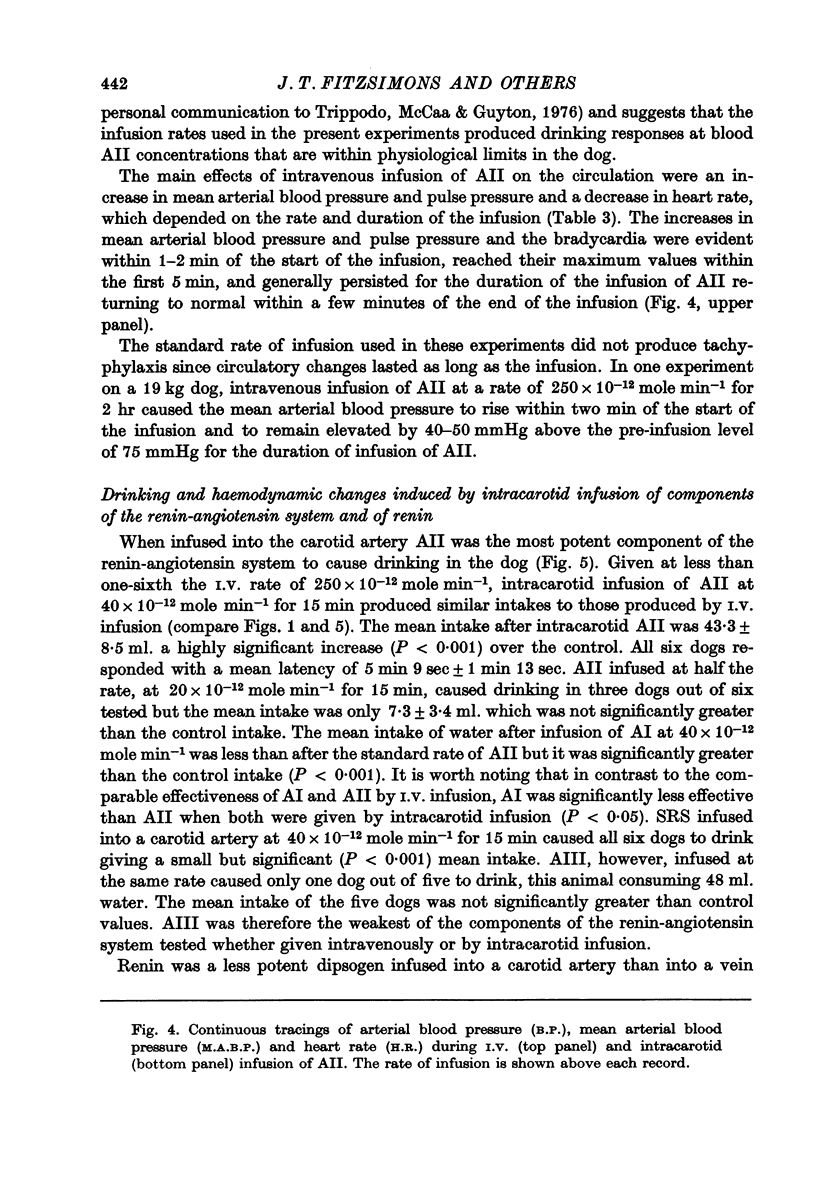
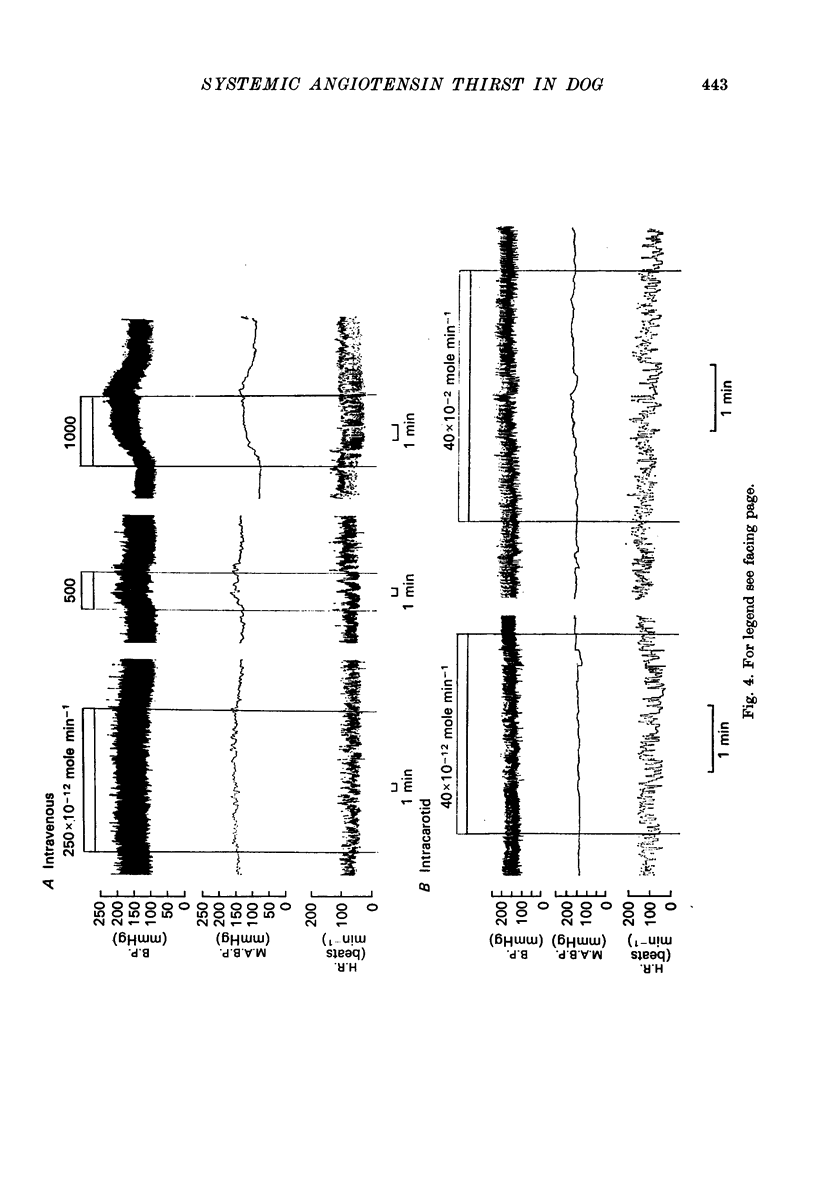
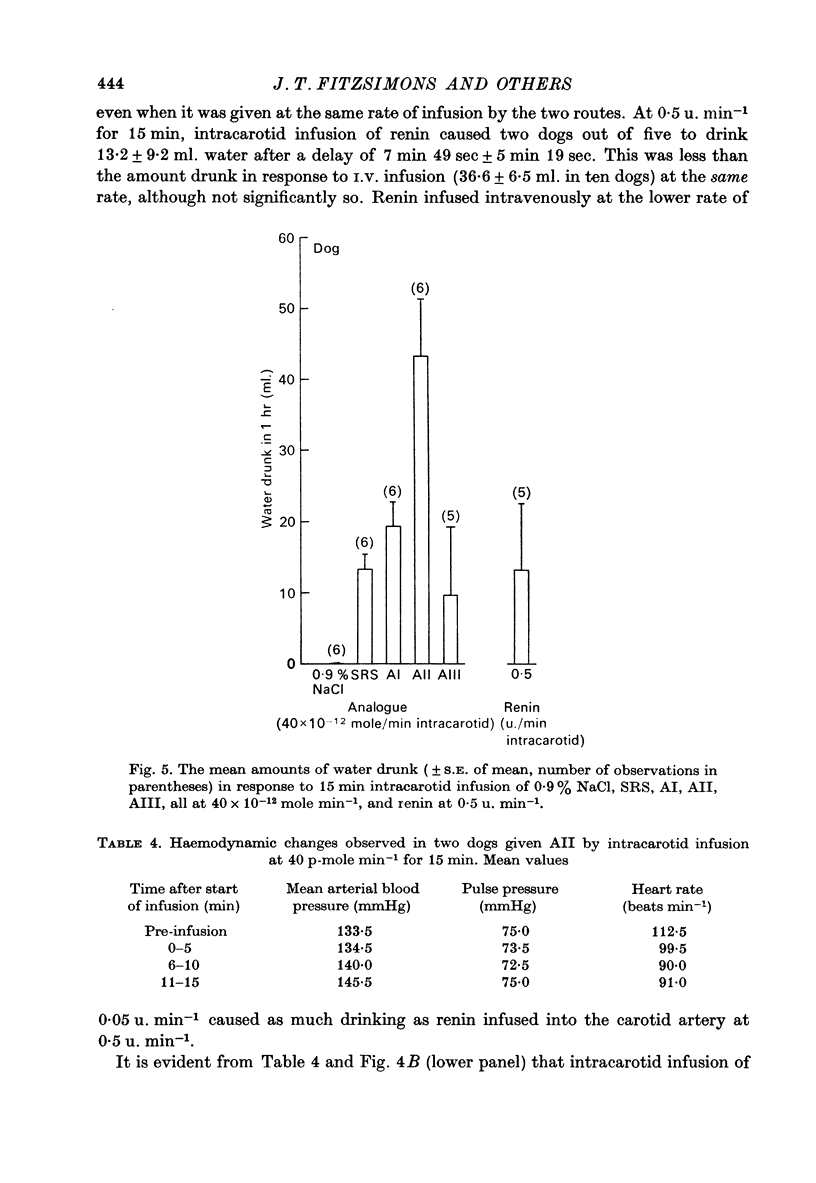
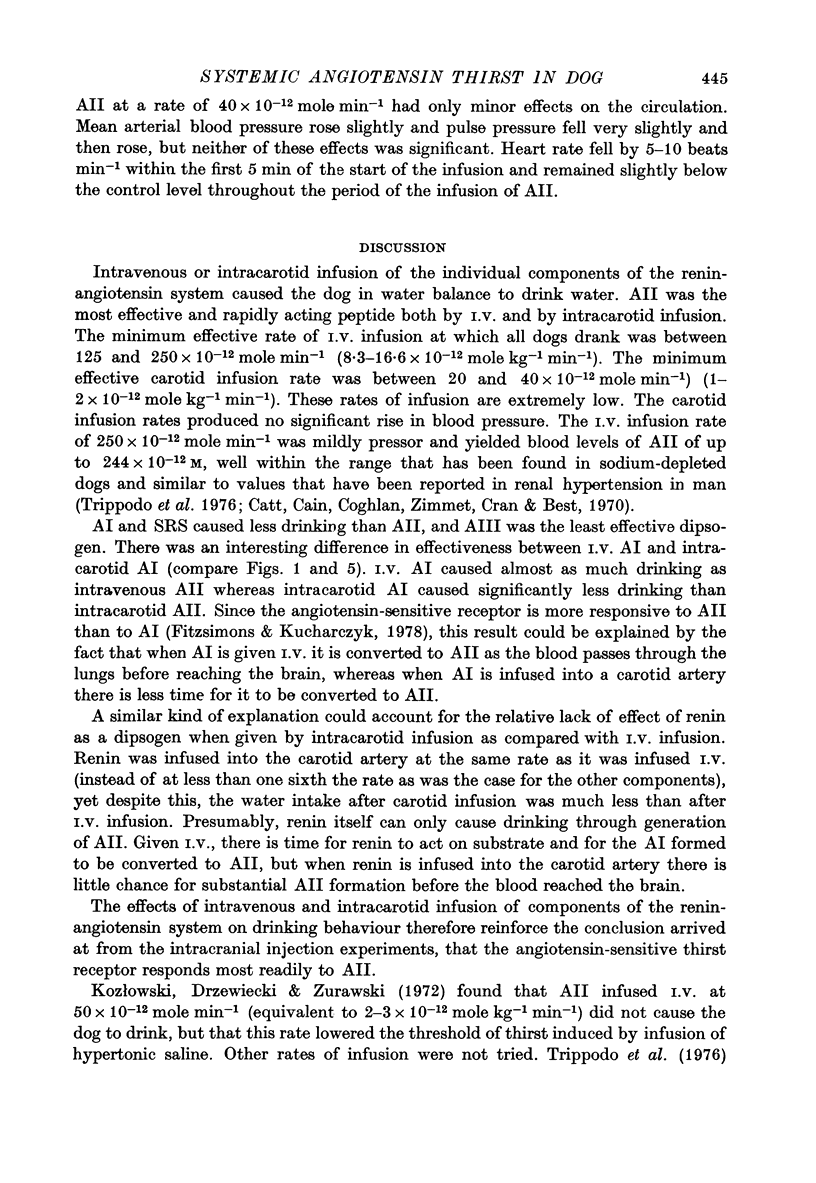
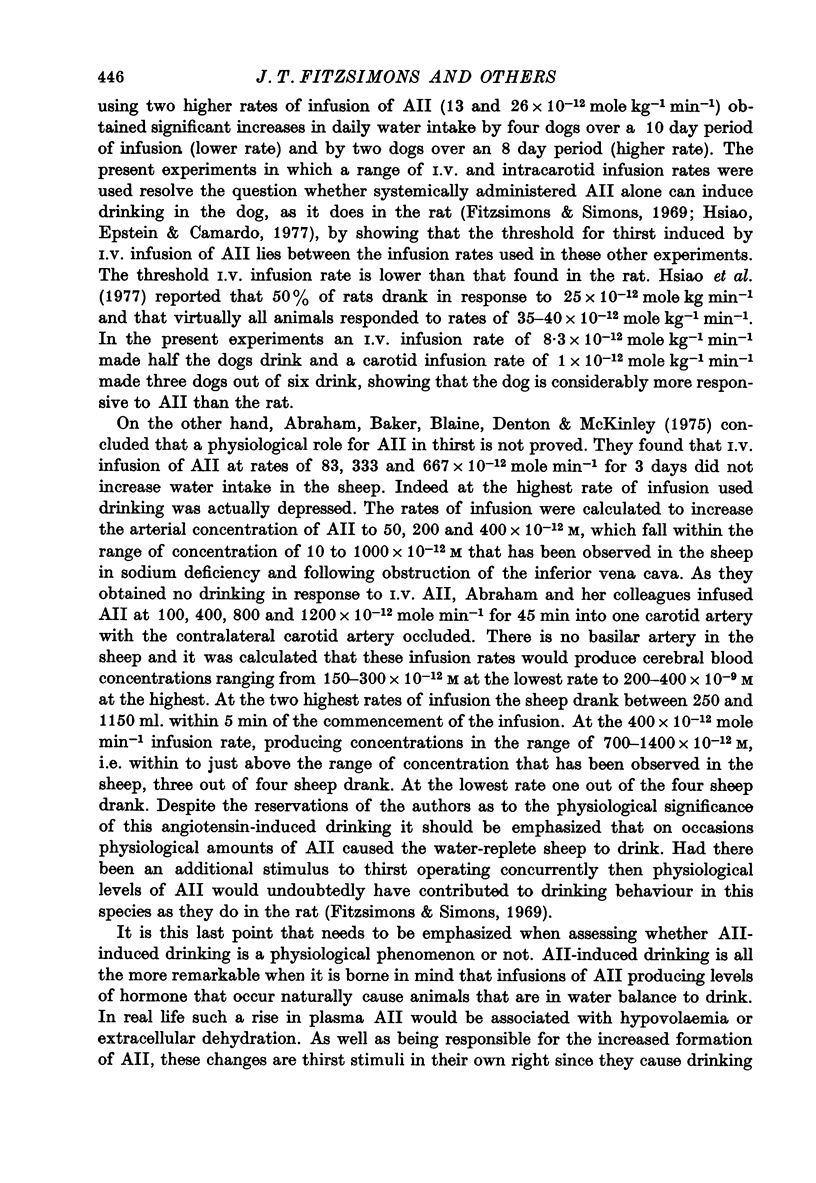
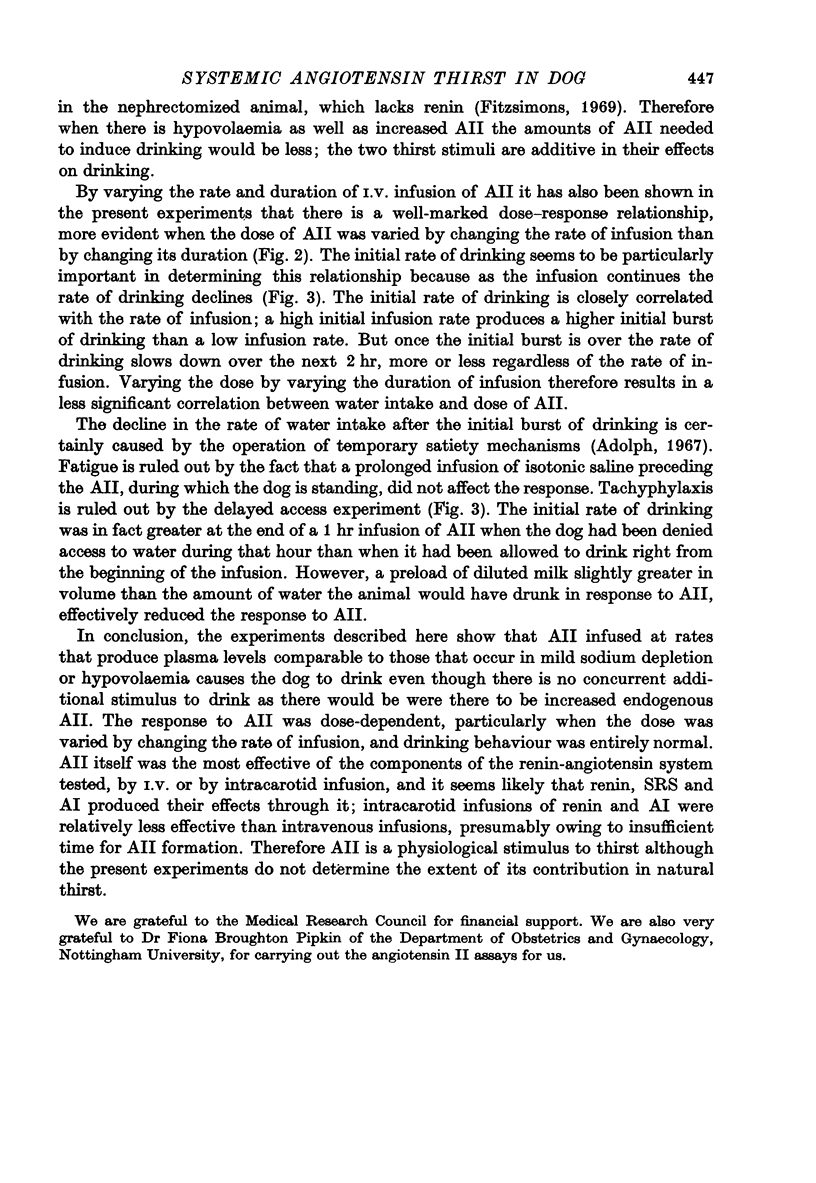
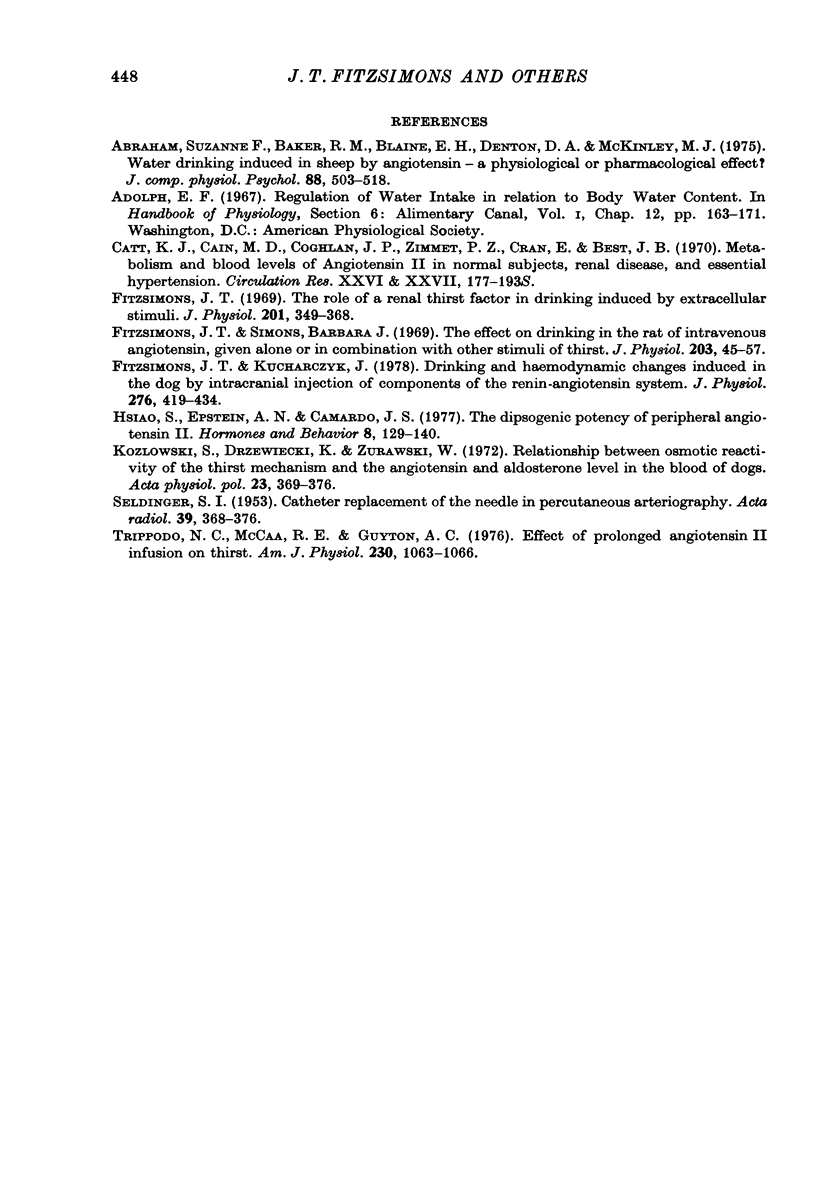
Selected References
These references are in PubMed. This may not be the complete list of references from this article.
- Abraham S. F., Baker R. M., Blaine E. H., Denton D. A., McKinley M. J. Water drinking induced in sheep by angiotensin--a physiological or pharmacological effect? J Comp Physiol Psychol. 1975 Feb;88(2):503–518. doi: 10.1037/h0076405. [DOI] [PubMed] [Google Scholar]
- Catt K. J., Cain M. D., Coghlan J. P., Zimmet P. Z., Cran E., Best J. B. Metabolism and blood levels of angiotensin II in normal subjects, renal disease, and essential hypertension. Circ Res. 1970 Oct;27(Suppl):177+–177+. [PubMed] [Google Scholar]
- Fitzsimons J. T., Kucharczyk J. Drinking and haemodynamic changes induced in the dog by intracranial injection of components of the renin-angiotensin system. J Physiol. 1978 Mar;276:419–434. doi: 10.1113/jphysiol.1978.sp012244. [DOI] [PMC free article] [PubMed] [Google Scholar]
- Fitzsimons J. T., Simons B. J. The effect on drinking in the rat of intravenous infusion of angiotensin, given alone or in combination with other stimuli of thirst. J Physiol. 1969 Jul;203(1):45–57. doi: 10.1113/jphysiol.1969.sp008848. [DOI] [PMC free article] [PubMed] [Google Scholar]
- Fitzsimons J. T. The role of a renal thirst factor in drinking induced by extracellular stimuli. J Physiol. 1969 Apr;201(2):349–368. doi: 10.1113/jphysiol.1969.sp008760. [DOI] [PMC free article] [PubMed] [Google Scholar]
- Hsiao S., Epstein A. N., Camardo J. S. The dipsogenic potency of peripheral angiotensin II. Horm Behav. 1977 Apr;8(2):129–140. doi: 10.1016/0018-506x(77)90030-7. [DOI] [PubMed] [Google Scholar]
- SELDINGER S. I. Catheter replacement of the needle in percutaneous arteriography; a new technique. Acta radiol. 1953 May;39(5):368–376. doi: 10.3109/00016925309136722. [DOI] [PubMed] [Google Scholar]
- Trippodo N. C., McCaa R. E., Guyton A. C. Effect of prolonged angiotensin II infusion on thirst. Am J Physiol. 1976 Apr;230(4):1063–1066. doi: 10.1152/ajplegacy.1976.230.4.1063. [DOI] [PubMed] [Google Scholar]


